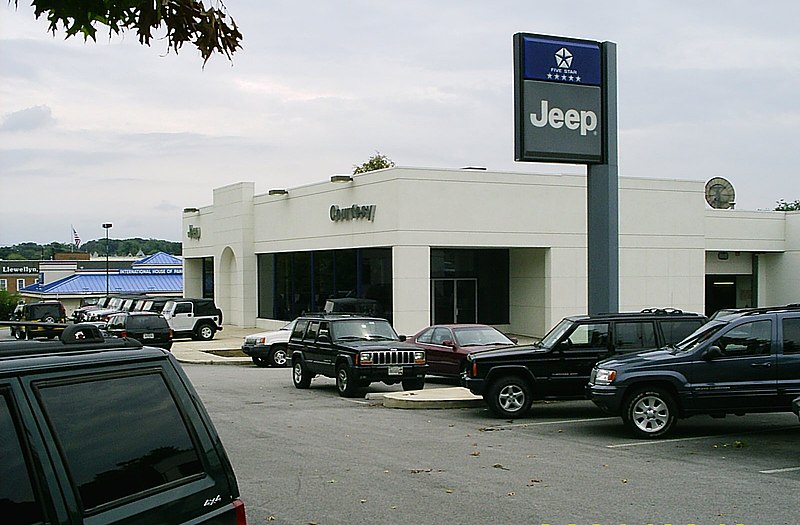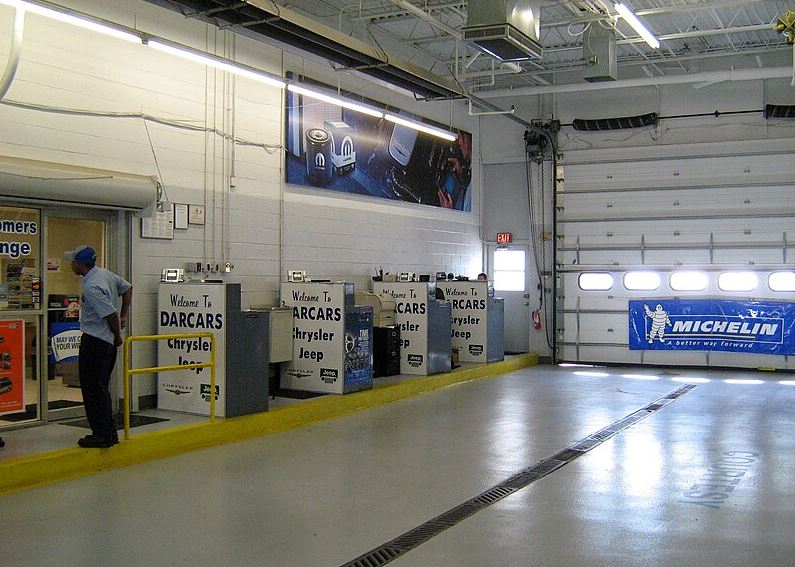Car dealerships, those places where you ogle at shiny four-wheeled wonders and drive one home if your wallet permits. But how did these automotive havens come to be? Well, start your engines and give them a rev, as we are about to take a trip down memory lane and understand more about the history of car dealerships.
Early Beginnings: Late 19th Century
In the late 19th century, the idea of a car dealership was virtually non-existent. At this time, the automobile industry was in its infancy, and cars were far from being a common sight on the streets. Cars were essentially a novelty, a luxury reserved for the very wealthy or those with a penchant for cutting-edge technology.
One of the most significant milestones during this era was the introduction of Ford’s Model T in 1908. This vehicle marked a turning point in the automotive industry. It was the first car to be mass-produced using assembly line techniques, which significantly lowered the cost of production. However, even with the Model T’s affordability, it was not as accessible as modern cars are today.
In these early days, car manufacturers typically employed unconventional methods to reach potential buyers. Many car manufacturers didn’t have the extensive dealership networks we see today. Instead, they relied on various means to sell their cars, including:
- Catalog Sales: Some manufacturers distributed catalogs or brochures showcasing their car models. Prospective buyers could browse these catalogs and place orders for a car, which would then be built and delivered to them.
- Factory Showrooms: A few manufacturers operated factory showrooms where customers could visit to see the available models. However, these showrooms were far from the modern dealerships we are familiar with today.
The Emergence of Car Dealerships in the Early 20th Century
As the early 20th century rolled in, the automobile industry was rapidly expanding. This period marked a significant turning point in the way cars were sold and distributed. Several key developments contributed to the birth of the car dealership:
- Proliferation of Car Manufacturers: With the increasing popularity of automobiles, more car manufacturers were entering the market. This growing competition made it essential for manufacturers to find efficient ways to get their cars into the hands of consumers.
- Need for Local Presence: Car manufacturers realized that having a local presence was crucial for effectively reaching potential buyers. It was impractical for manufacturers to directly sell and service their vehicles across vast regions or even countries.
- The Franchise System: To address these challenges, manufacturers started to establish franchise agreements with independent entrepreneurs or businesspeople. These early entrepreneurs would become the first wave of car dealers. The franchise system allowed manufacturers to extend their reach without the need to operate every sales and service location themselves.
- Entrepreneurial Spirit: Many of the early car dealerships were started by individuals with a keen entrepreneurial spirit. They recognized the potential in the rapidly growing automotive industry and took the initiative to establish businesses that focused on selling and servicing cars.
This period laid the foundation for what we now recognize as car dealerships. They became integral to the automotive industry, serving as intermediaries between car manufacturers and consumers. Dealerships provided a local, accessible point of contact for customers looking to purchase and maintain their vehicles.
Examples of Early Car Dealerships:
The following are few of the earliest known car dealerships in the world.
- Winton Motor Carriage Company: One of the earliest examples of a car dealership was associated with the Winton Motor Carriage Company, founded by Alexander Winton. Winton started producing automobiles in the late 19th century and established a showroom in New York City in 1898. This showroom served as a prototype for early car dealerships, featuring various Winton models for potential buyers to view.
- Packard Motor Company: The Packard Motor Company, founded in the late 19th century, was another pioneer in the automotive industry. They recognized the value of dealerships in selling their cars. In 1900, they appointed their first authorized dealer, Earle C. Anthony, in Los Angeles. This marked a significant step towards a formalized dealership network.
Expansion and Franchising: 1910s-1920s
During the 1910s and 1920s, the automotive industry in the United States and around the world saw a rapid expansion and transformation in the structure of car dealerships, leading to the establishment of the modern dealership system. Here’s a closer look at this pivotal period:
- Increased Demand: The 1910s and 1920s marked a time of tremendous growth in the automotive industry. As more people recognized the benefits and convenience of owning a car, the demand for automobiles surged. This increased demand necessitated a more extensive network of dealerships to meet customer needs.
- Franchise Agreements: To efficiently distribute their vehicles and accommodate the growing demand, car manufacturers increasingly turned to franchise agreements. These agreements allowed independent entrepreneurs to operate as authorized dealers. The dealerships, under these arrangements, were responsible for selling the manufacturer’s cars, providing after-sales services, such as maintenance and repairs, and offering a direct link between the manufacturer and the consumer.
General Motors is a prime example of a major automaker that adopted a franchise dealership model. In 1913, GM introduced the concept of Chevrolet dealerships, providing entrepreneurs with the opportunity to become authorized Chevrolet dealers. This initiative was a significant step towards the franchise-based dealership system. Independent dealerships sold GM’s various brands.
On top of that, there’s also the case with Henry Ford. He initially sold his Model T cars directly to consumers, but by the 1910s, he recognized the potential of the dealership model. Ford established the first Ford dealership in Chicago in 1912, and over time, he embraced the franchise system, which greatly contributed to the widespread availability and success of the Model T.
The Great Depression: 1930s
The 1930s marked a challenging period for car dealerships. The Great Depression caused economic hardships, leading to the closure of many dealerships. However, some survived by diversifying their services. Dealers began offering not only new cars but also used cars, parts, and repair services to stay afloat during tough times.
Many dealerships faced financial difficulties and were forced into bankruptcy or had to shut down entirely. The combination of reduced sales and challenging economic conditions put a substantial strain on these businesses. Consumers had limited resources to spend on new cars, and those who could afford a car often delayed their purchases due to financial uncertainty. But, there were always ways around it. Like Chrysler Corporation responded to the economic downturn by introducing the “Plymouth” brand, targeting budget-conscious buyers.
During this difficult period, car dealerships had to adapt to survive. Many of them implemented various strategies to weather the storm:
- Diversification: To offset the decline in new car sales, dealerships started diversifying their services. They began offering not only new cars but also used cars. For example, Chevrolet, under General Motors, employed a strategy of diversification during the Great Depression. In 1932, Chevrolet dealerships introduced a more affordable line of cars called the Chevrolet Standard, aimed at cost-conscious consumers. This move contributed to Chevrolet’s resilience during the economic turmoil.
- Parts and Repair Services: Car dealerships expanded their operations to include parts and repair services. This move was not only a response to the reduced demand for new cars but also an acknowledgment of the growing need for maintenance and repairs of existing vehicles. Providing these services allowed dealerships to remain operational and retain their workforce.
- Financing and Credit: Some dealerships began to offer financing and credit options to customers, making it more affordable for people to purchase cars. This strategy helped stimulate sales and made it easier for consumers to invest in a vehicle during challenging economic times.
Evolution of Dealership Services: 1970s-2000
In the 1970s, car dealerships began offering additional services, such as financing, leasing, and servicing. These services contributed to the financial success of dealerships and provided more convenience to customers. The diversity of vehicle models and brands offered by dealerships also expanded.
- Financing and Leasing: In the 1970s, dealerships began to offer financing options and leasing services. This marked a significant shift in how customers could purchase vehicles. Many dealerships, such as Toyota and Ford dealers, partner with financial institutions to offer competitive financing and leasing options to customers.
- Parts and Accessories: Dealerships began to offer a comprehensive selection of parts and accessories for various makes and models. This made it more convenient for customers to get genuine parts and customize their vehicles.
- Used Cars and Certified Pre-Owned Programs: Dealerships started to pay more attention to the used car market. Certified pre-owned (CPO) programs were introduced, assuring customers of the quality and reliability of used vehicles sold by the dealership. This instilled confidence in buyers looking for more affordable options. Luxury brands like Lexus and Audi have well-regarded certified pre-owned programs, even now.
Birth of the Car Dealership: Early 20th Century
The emergence of the car dealership concept began in the early 20th century. As the automobile industry grew, manufacturers realized they needed a more efficient way to distribute their cars. This led to the establishment of the first car dealerships, which were often operated by manufacturers themselves or by entrepreneurs who recognized the potential of this new industry.
The digital revolution, spanning from 2000 to the present, has revolutionized the automotive retail industry. Car dealerships have embraced the internet, providing online services that enhance the customer experience. Online inventory listings, such as those on websites like Autotrader and Cars.com, enable buyers to browse a wide range of vehicles, view photos, and compare prices effortlessly.
Virtual showrooms and 360-degree tours, offered by companies like Tesla and BMW, allow customers to explore cars from the comfort of their homes. Furthermore, customer reviews and ratings on platforms like Yelp and Google Maps assist buyers in making informed decisions.
With the advent of e-commerce, dealerships now offer online purchasing and home delivery options. This digital transformation has made the car-buying process more convenient and transparent, empowering customers with the tools they need to research, compare, and purchase vehicles online.
Conclusion
The history of car dealerships is a remarkable journey that has evolved alongside the automotive industry. From the early 20th-century emergence of the dealership concept to the resilience shown during the Great Depression, and the expansion of services in later years, dealerships have continually adapted to meet the needs of consumers. The digital age has further transformed how they operate, providing greater accessibility and convenience for buyers. Car dealerships have become not only places to purchase vehicles but also hubs of innovation, offering a wide range of services to meet the diverse demands of today’s automotive market.


